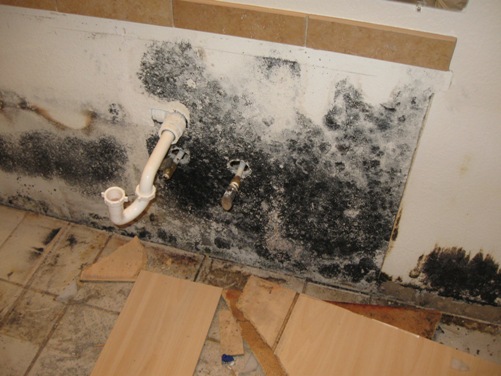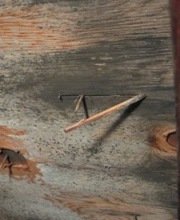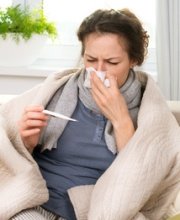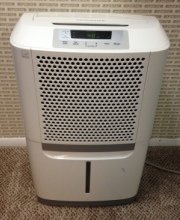Find a Mold Specialist Now
Click or Call, Toll-Free 24/7
cleaning black mold
Cleaning black mold is a more difficult process than you might imagine. If you’ve got black mold in your home, though, it’s important to remove the mold as soon as you can and to do the job right. If it’s not done properly, some mold may remain and, since mold grows rapidly and spreads easily (if the conditions are right), you may soon find yourself facing a full-blown mold problem again. It can be challenging to remove mold from some surfaces, though, and even when they appear clean, small amounts of mold may remain. We’ll tell you how to make sure all traces of mold are gone and when to seek help from a professional.
Why Is Black Mold So Dangerous?
You probably already know that black mold is harmful to your health. All types of mold can cause health problems such as allergic reactions, respiratory infections and asthma attacks. Black mold, or Stachybotrys chartarum as it is technically known, is particularly hazardous to the health, though.
Stachybotrys chartarum is sometimes referred to as toxic mold because it produces toxic substances called mycotoxins. Exposure to black mold and the mycotoxins it produces has been linked to numerous health problems, including trouble breathing, coughing, wheezing, chronic sinus infections, pneumonia and asthma attacks. It may also cause migraine headaches, chronic fatigue, and other symptoms.
While elderly people, small children, and those with pre-existing health problems are at greatest risk, even healthy young adults can become ill due to mold exposure. It can even make your pets sick. Some health problems may continue long after the mold has been removed from your home. You can learn more about health problems caused by black mold.

Methods of Cleaning Black Mold
In some cases, the removal of black mold is as simple as scrubbing it off a surface with an antimicrobial cleanser and a scrub brush. That works well with nonporous materials like glass, metal, porcelain and tile. It won’t work with porous surfaces, though, like drywall, carpet, mattresses or sofa cushions. It may not work on wood, either.
When using a mold removal product on nonporous surfaces, follow the instructions on the product. Use cleaning products in a well-ventilated area and rinse the surface well when you’re done scrubbing it. Never combine two or more cleaning products.
Since it is usually impossible to remove mold from porous surfaces like drywall, insulation, carpet and fabric, these things need to be removed, discarded and replaced. You cannot simply clean them. Even if they appear clean, small amounts of mold will remain trapped in the material and later may begin to grow and spread.
Cleaning black mold from wood is tricky as it is often impossible to remove it completely. When you can, we recommend you remove moldy wood from the home along with other moldy materials. Sometimes wood cannot be removed, however. For instance, wooden studs within walls are difficult to remove and replace. In such cases, any mold that cannot be removed by scrubbing the wood is usually sanded off. Then a sealant may be applied to prevent any remaining mold from being able to grow or spread. You can read more about that process, known as encapsulation.
If you have moldy wood that needs to be sanded in order to remove the wood, we recommend hiring a professional, at least for that part of the mold removal job. Sanding wood poses a significant health hazard because it sends so many mold spores into the air where they are easily inhaled. Particularly when dealing with a hazardous strain of mold like Stachybotrys chartarum, it is safer to let a professional handle the job.
When cleaning up mold and removing moldy materials from the home, it’s important to wear protective gear, including an N-95 or N-99 face mask, a Tyvek suit and latex or vinyl gloves, to prevent exposure to mold spores that can make you sick. You can read more about personal protective equipment for mold removal.
Moldy materials should be doouble wrapped in heavy-duty trash bags before you carry them through the house to prevent the inadvertent scattering of mold spores that can lead to the growth of mold in other parts of the home.
If you’re not sure whether certain items can be adequately cleaned or how best to clean them, we recommend consulting a professional. Later, we’ll tell you how you can get some free advice from a mold removal professional.
Products for Cleaning Black Mold
Some people use bleach to clean mold but we don’t recommend that. Bleach doesn’t kill all types of mold, it can irritate your skin and may trigger breathing problems in some people, and it can also damage some surfaces. Here is more about using bleach to kill mold.
Instead of using bleach, we recommend using an antimicrobial cleanser designed to kill mold. Those are more effective than bleach and you can even find some made from non-toxic, environmentally-friendly ingredients. Make sure to choose a product known to kill Stachybotrys chartarum if you think you might be dealing with that particular strain of mold. If the label doesn’t include that information, you can contact the manufacturer to check.
For Help with the Removal of Black Mold
If you need help with mold removal, or if you’d just like some free advice from an expert in the field, we recommend scheduling a free in-home consultation with a mold removal professional. An experienced professional will visit your home, inspect the mold there, and explain the work that needs to be done. He or she will answer whatever questions you may have and explain the best methods of cleaning black mold in your home. You’ll receive a written estimate for the cost of having the work professionally done, but the consultation is free and you’re under no obligation. To find qualified mold removal professionals offering free consultations in your area, just follow the link.
Return From Cleaning Black Mold To Our Main Black Mold Health Page
Ref:
CDC - Stachybotrys chartarum
Privacy Policy Terms and Conditions Accessibility Do Not Sell My Information Disclaimer Contact Us




